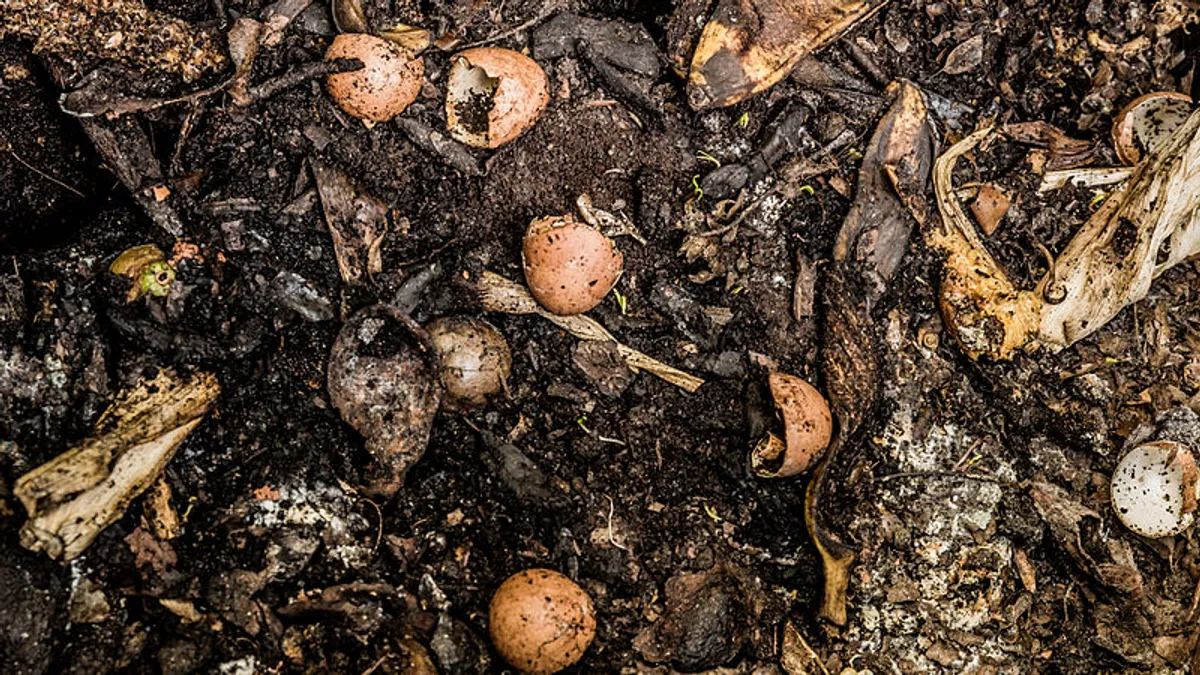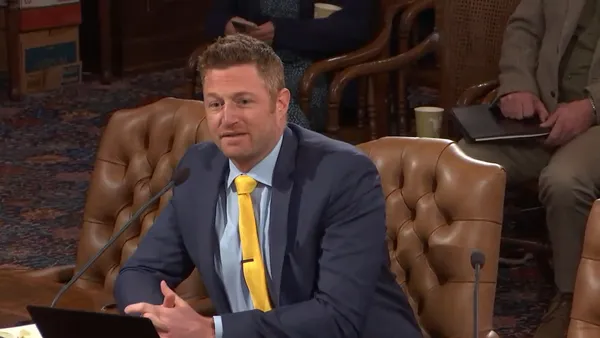Dive Brief:
- BioCycle's new 2017 State of Organics Recycling survey found 4,713 operational composting sites in the U.S. Among these sites, 57% process only yard trimmings, 13% process multiple organics streams, 8% process farm material, 6% process on-site institutional material, 5% process yard trimmings and food waste, and 5% process biosolids. Windrow composting was found to be the most common method.
- In terms of overall composting facilities, Ohio led the way with 419. Massachusetts had the most facilities accepting multiple streams at 185. Washington had the most sites taking specifically yard trimmings and food waste at 55. California, seen as having some of the most supportive state programs for processing infrastructure, was a leader in multiple categories, including anaerobic digestion.
- While 43 states and the District of Columbia responded to BioCycle's survey between December 2016 and January 2017, the depth of responses and definitions used varied widely. For some state agencies that didn't respond, and many of the ones that did, a lack of reporting requirements and limited staffing were commonly cited issues. In fact, BioCycle found that fewer states were collecting information since its last survey in 2014 and has pledged to work on helping standardize that process as a result.
Dive Insight:
BioCycle has been collecting this type of data for decades and also used to produce a similar report called "The State of Garbage in America." According to Editor Nora Goldstein, that project became untenable as the quality of state data on waste and recycling declined over the years. This task has become similarly challenging for tracking organics processing at a time when state environmental agencies are increasingly short-staffed and budget cuts are possible at the federal level. Though as Goldstein told Waste Dive during the NYC Food Waste Fair in July, the amount of energy around organics diversion and processing is unlike anything she has seen before. As more cities and states look for ways to divert this material from disposal, they will need good data to help assess their options.
In states or cities with organics disposal bans and diversion mandates, the drive to create more processing capacity is already underway. According to BioCycle's survey, state grants are some of the most commonly used methods to incentivize this, and California is at the forefront with its Climate Investments initiative. Using cap-and-trade money deposited into its Greenhouse Gas Reduction Fund, the state distributed $12 million for composting, $12 million for anaerobic digestion and $5 million for food waste prevention during the past fiscal year. Though like in many states, even ones that also have diversion mandates, upfront capital costs and permitting requirements for larger facilities are still a concern. States in the earlier stages of infrastructure conversations, such as Pennsylvania and Maryland, are expected to require broader overhauls to their permitting process before significant construction can even begin.
When it comes to composting facilities, the start-up costs and permitting factors can be easier than anaerobic digestion, though finding appropriate space without too many neighbors can be a factor in more densely populated areas. BioCycle's analysis noted growth in the number of small and mid-sized composting facilities since the last survey, due in part to fewer capital and permitting barriers for smaller sites. Anecdotally, much of this growth is being driven by private investment though examples of public investment or partnerships have been apparent in Phoenix, New York and Boise, ID, among others. In many cases figuring out the right type of facility is very locally specific and will require customized solutions.
The organics processing conversation will only become more relevant in future years, as government officials continue thinking about how to achieve high diversion targets. Whether that means collecting material in a separate cart, co-collecting it in existing carts, putting it through an in-sink device or doing something else entirely is still locally specific and up for debate within the industry. Collection costs, participation and processing availability all remain key factors. In the view of BioCycle and others, that makes it even more important to have a good understanding of what's working, where service gaps exist and how strong the organics processing industry is as more people pin their "zero waste" hopes on it.















